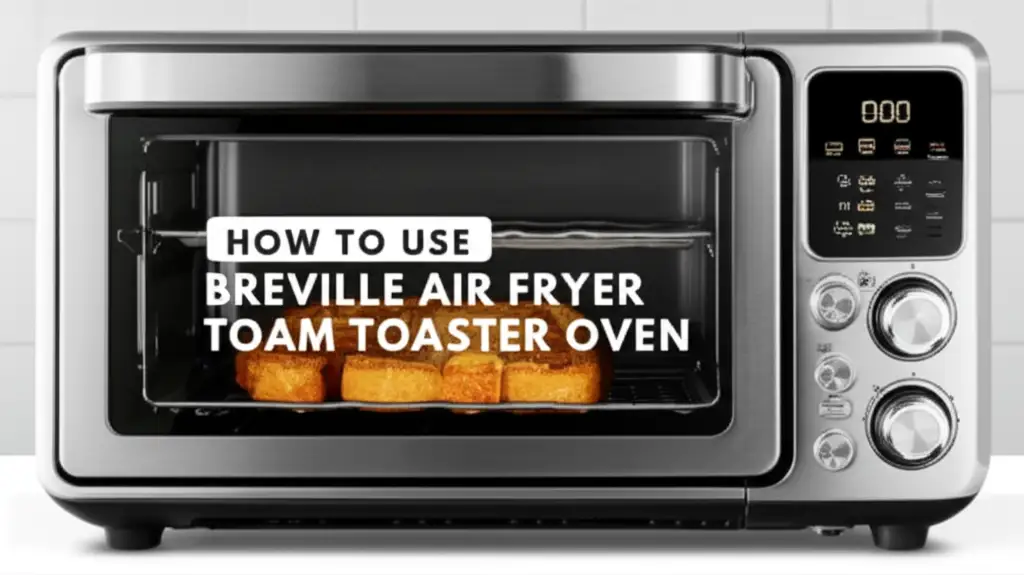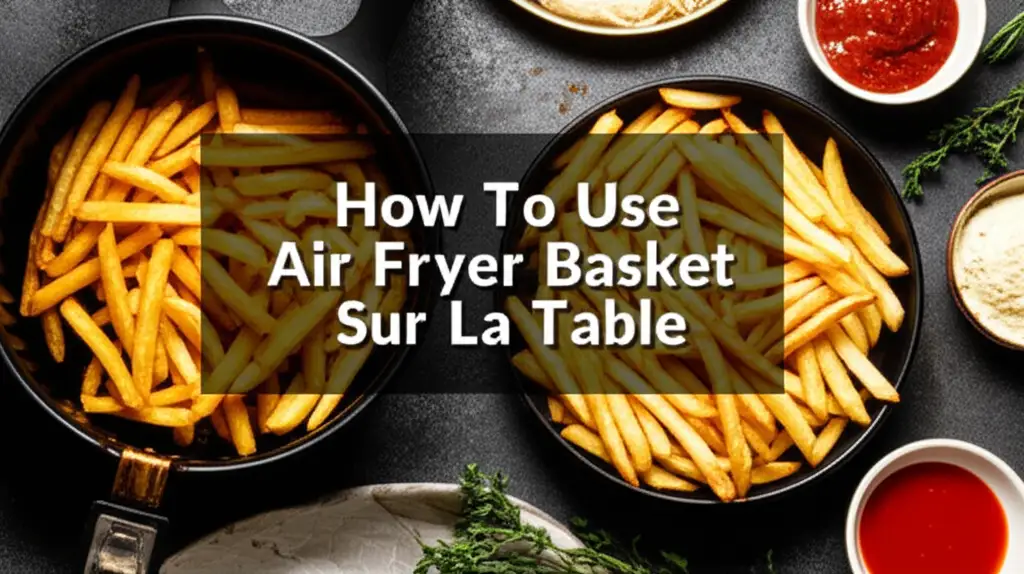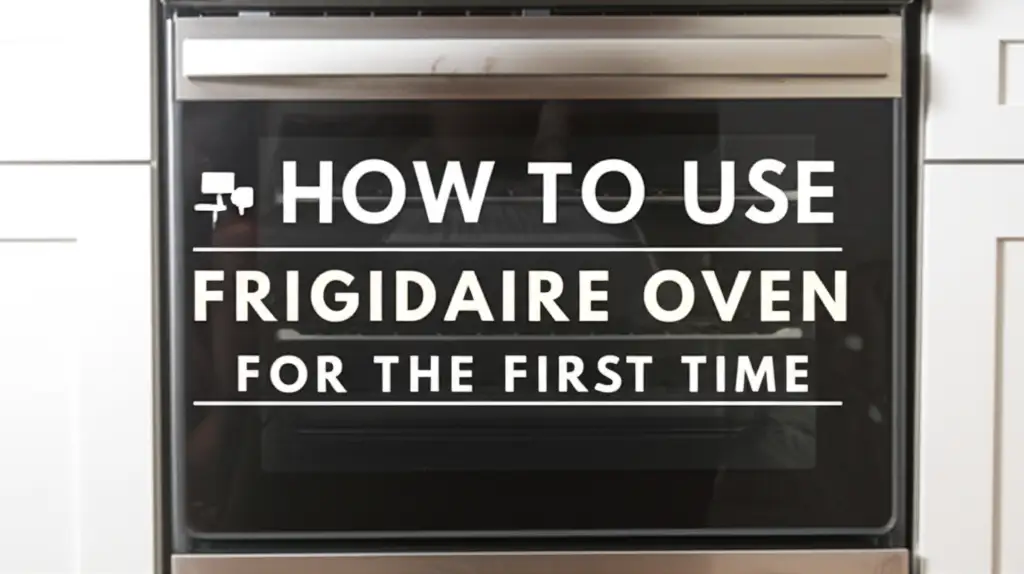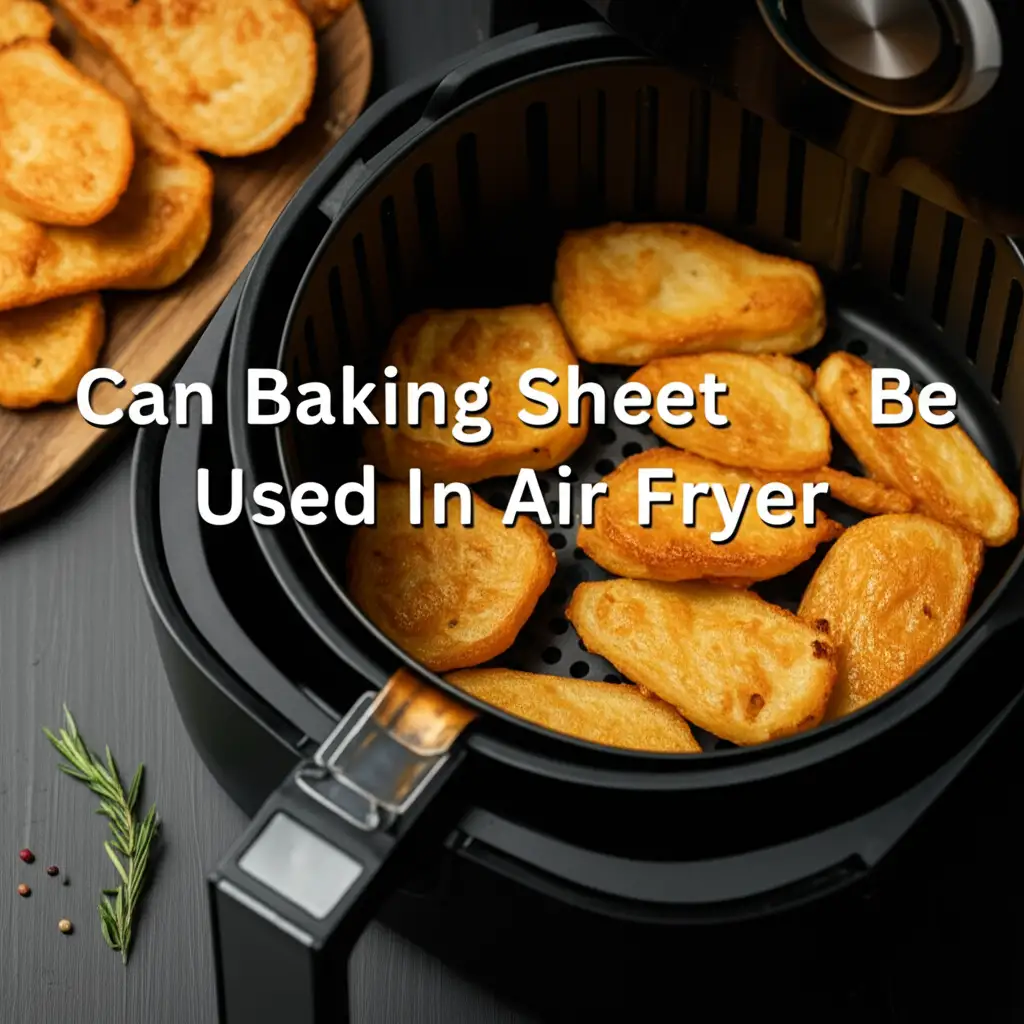· Todd Martin · Kitchen Appliances · 19 min read
Can Convection Microwave Be Used As Air Fryer
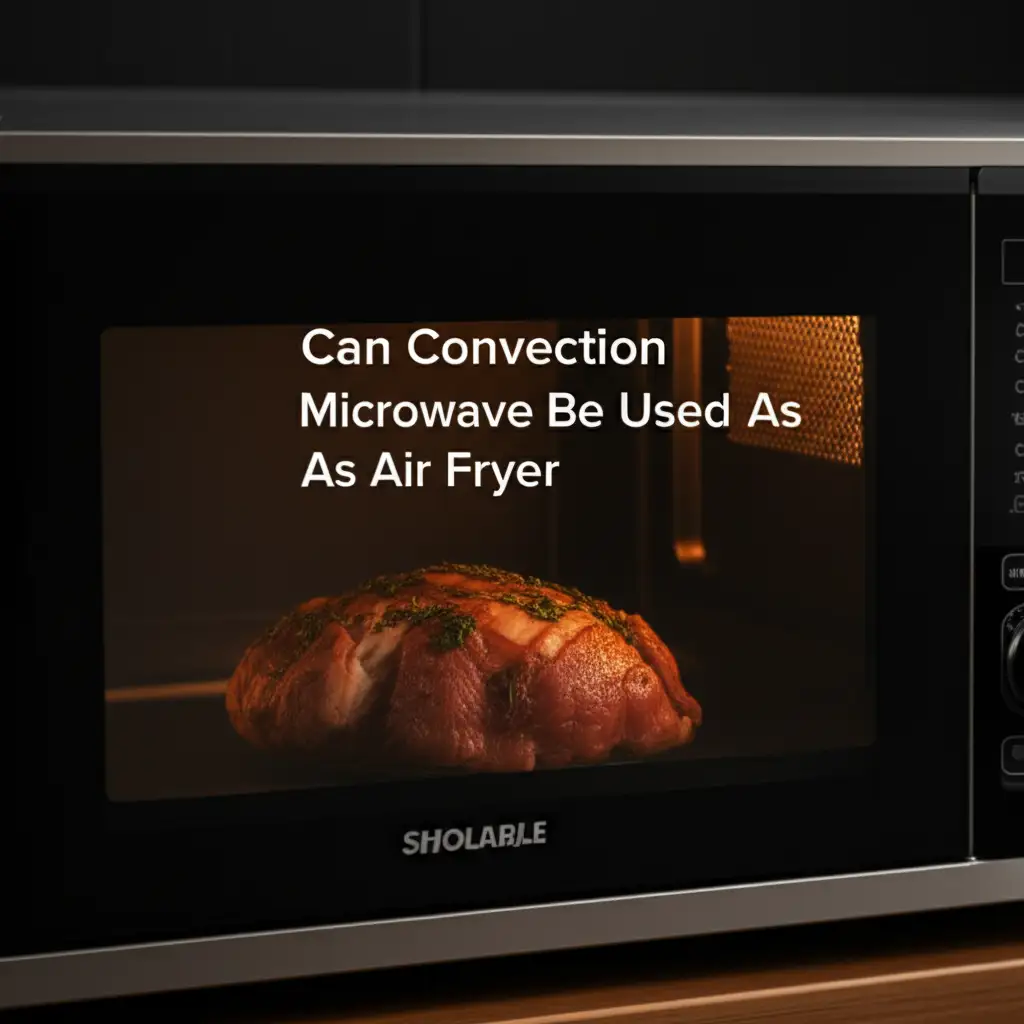
Unlock Air Fryer Magic with Your Convection Microwave
Modern kitchens often hold appliances that do more than one job. We look for tools that offer versatility and convenience. One common question homeowners ask is: Can a convection microwave be used as an air fryer? This is a smart question, as it helps you decide if you need another appliance or if your current one handles the task. Many people want the crispy, delicious results of air frying without adding another gadget to their counter.
I remember thinking about this exact question when I first saw air fryers gaining popularity. I already had a convection microwave. I wondered if it could achieve similar results. This article explores how a convection microwave works and how it compares to a dedicated air fryer. We will discuss their similarities, differences, and the key techniques to use your convection microwave for air frying. You will learn about food choices, accessories, and important tips for success. Let us find out if your convection microwave is the hidden air fryer you need.
Takeaway
Your convection microwave offers a strong alternative to a standalone air fryer. Here are the key takeaways:
- Yes, it works: A convection microwave uses hot air circulation, similar to an air fryer, for crispy food.
- Adjustments are key: You may need to modify cooking times and temperatures from air fryer recipes.
- Accessories help: Using a crisping rack or perforated pan improves airflow for better results.
- Food size matters: Cook in smaller batches for optimal crispiness.
- Not identical, but close: It may not match a dedicated air fryer’s speed or crispiness for all foods, but it comes very close for many.
Clear and Concise Answer to the Main Query
Yes, you can use a convection microwave as an air fryer. A convection microwave circulates hot air with a fan, much like an air fryer. This hot air movement helps food brown and become crispy. While results may vary slightly from a dedicated air fryer, your convection microwave can produce good, crispy food with the right techniques.
Understanding Convection Microwave Technology
Let us explore what makes a convection microwave work. This appliance combines two distinct cooking methods. It offers both traditional microwave heating and convection cooking. Understanding each mode helps you use it effectively.
The microwave part uses electromagnetic waves. These waves excite water molecules in food, causing them to heat up quickly. This is great for fast reheating or cooking. However, it does not brown or crisp food. That is where the convection function comes in handy.
The convection function uses a heating element and a fan. The heating element warms the air inside the oven cavity. The fan then circulates this hot air around the food. This creates an even cooking environment. Hot air reaches all food surfaces. This promotes even baking, roasting, and browning. It cooks food faster and more uniformly than a conventional oven.
I have found this combination incredibly useful. I can quickly defrost something with the microwave function. Then, I can switch to convection to brown the outside. This dual capability makes convection microwaves very versatile kitchen tools. They save counter space by combining two important appliances.
How Air Fryers Achieve Crispy Results
Air fryers have become popular for making crispy foods. They promise delicious results with less oil. But how do they actually work? An air fryer operates on a simple principle: rapid hot air circulation. This process creates a frying-like effect.
At its core, an air fryer is a compact convection oven. It has a heating element and a powerful fan. The heating element quickly warms the air inside the cooking chamber. The fan then forces this hot air to circulate at high speeds. This air moves around the food, creating a superheated environment.
This rapid air movement serves two main purposes. First, it cooks the food quickly and evenly. Second, it creates a crispy exterior. The hot air removes moisture from the food’s surface. This dehydrates the outer layer, allowing it to become crisp and golden brown. It mimics the effect of deep frying without submerging food in oil. This results in food that is crunchy on the outside and tender on the inside.
I enjoy using an air fryer for things like chicken wings or french fries. The crispiness is impressive, and they use far less oil than traditional frying. Understanding this mechanism is key to replicating similar results in a convection microwave. The core principle of hot air movement is what makes both appliances effective for crisping.
Key Similarities: Convection Microwave vs. Air Fryer
It is easy to see how a convection microwave and an air fryer share common ground. Both appliances rely on the same fundamental cooking principle to achieve crispy results. This shared technology makes using your convection microwave as an air fryer a real possibility.
First, both appliances use hot air. They contain a heating element that warms the air inside their cooking chambers. This hot air is crucial for cooking food and developing a crisp texture. The temperature controls on both allow you to set specific heat levels for different dishes.
Second, a fan is central to both designs. This fan circulates the hot air around the food. This constant movement of hot air cooks food more evenly and quickly than static heat. It also helps to brown and crisp the food’s surface. This is the “convection” aspect of both devices. Without the fan, the air would just sit there, and you would not get the crisping effect.
Third, both aim for a healthier cooking method. They reduce the need for excessive oil compared to deep frying. The circulating hot air does the work of crisping. This means you can enjoy many traditionally fried foods with less fat. For example, I can get crispy chicken nuggets in my convection microwave just like in an air fryer, using very little oil.
Finally, both appliances can be used for a variety of foods. They excel at roasting small items, reheating leftovers, and baking. This versatility makes them valuable additions to any kitchen. Understanding these similarities helps us bridge the gap between their functionalities.
Key Differences: Convection Microwave vs. Air Fryer
While convection microwaves and air fryers share similarities, important differences exist. These differences influence cooking performance and results. Knowing them helps you set realistic expectations for your convection microwave.
One major difference is size and airflow design. Dedicated air fryers are typically more compact. Their smaller cooking chamber allows for even faster air circulation. This concentrated airflow contributes to quicker cooking times and often a crispier finish. A convection microwave oven, especially a larger one, has a bigger cavity. This larger space means the hot air has more room to disperse. It can take longer to achieve the same level of crispiness.
Another difference is the primary function. A convection microwave is a multi-function appliance. It balances microwave cooking with convection. An air fryer is designed solely for rapid air circulation cooking. Its fan is often more powerful and optimized for crisping. This specialization gives air fryers an edge in speed and intense crisping.
Accessories also differ. Many air fryers come with specialized baskets or trays. These are designed to maximize airflow around the food. While convection microwaves include racks, they may not offer the same level of open air circulation. You might need to use specific air fryer basket types or other perforated pans to improve airflow in a convection microwave. Knowing what type of accessories you can use, such as a baking pan in an air fryer or baking sheet in an air fryer, helps achieve better results.
Finally, the preheating time can vary. Air fryers heat up very quickly due to their small size. Convection microwaves, especially larger models, might take longer to reach the desired temperature. This affects overall cooking time. These distinctions mean that while your convection microwave can mimic an air fryer, adjustments are often necessary for optimal outcomes.
Maximizing Your Convection Microwave for Air Frying
To get the best air frying results from your convection microwave, you need specific strategies. It is not just about pressing a button. You can enhance crispiness and cook quality with the right approach. My own experience has shown me that small changes make a big difference.
First, always preheat your convection microwave. Just like an air fryer, preheating ensures the cooking chamber is at the right temperature. This helps food start crisping immediately. Give it at least 5-10 minutes to reach the set temperature. This step is critical for good results.
Second, use the right accessories. Airflow is paramount for air frying. Instead of a solid baking sheet, use a perforated pan or a wire rack placed over a baking sheet. This allows hot air to circulate completely around the food. If your microwave came with a crisping rack, use it. Some people even put their air fryer basket in a convection oven for this purpose. This boosts airflow significantly.
Third, do not overcrowd the food. This is a common mistake. Lay food in a single layer with space between pieces. Overlapping food traps moisture and prevents crisping. If you are cooking a lot, work in batches. This ensures even cooking and maximum crispiness. I always tell people to give their food “breathing room.”
Fourth, consider flipping or shaking the food. Many air fryer recipes tell you to shake the basket. You should do the same in your convection microwave. Flipping food halfway through cooking ensures all sides get exposed to the hot air. This promotes uniform browning and crispiness. This method is especially helpful for small items like fries or chicken pieces. You can even learn how to cook chicken in a convection microwave oven more effectively with this tip.
Finally, experiment with cooking times and temperatures. Air fryer recipes often use higher temperatures for shorter times. Your convection microwave might need slightly lower temperatures or longer cooking times due to its larger cavity or less intense airflow. Start with recommended air fryer settings, but check food often and adjust as needed. Getting to know your specific model, like understanding how to use your KitchenAid convection microwave oven or GE Profile convection microwave oven, makes a big difference.
Best Foods to “Air Fry” in a Convection Microwave
Many types of food benefit from the “air frying” function of a convection microwave. The key is to choose foods that traditionally perform well in an air fryer. Think about items you want to be crispy on the outside and tender on the inside. I have found certain foods consistently deliver excellent results.
- Frozen Foods: This category is a winner. Frozen french fries, onion rings, chicken nuggets, and fish sticks cook wonderfully. They usually have a coating that crisps up beautifully under hot air. Spread them in a single layer on your rack. You will get a texture very close to deep-fried versions.
- Vegetables: Roasting vegetables in a convection microwave provides great texture. Broccoli, cauliflower, Brussels sprouts, and potato wedges become tender inside with crispy edges. Toss them lightly with oil and seasonings. The hot air circulation helps them caramelize nicely.
- Chicken Pieces: Small chicken parts, like wings, drumettes, or boneless bites, crisp up well. Ensure they are not overcrowded. A light coating of flour or cornstarch can enhance the crispiness. You can explore how to cook chicken in a convection microwave oven for more detailed steps.
- Reheating Leftovers: This is an underrated use. Pizza, spring rolls, or fried chicken from the night before can be revived. The convection function prevents them from becoming soggy, which often happens in a regular microwave. They get warm and regain some crispness.
- Baked Goods (Small): While primarily for savory foods, some smaller baked items can benefit. Reheating pastries or crisping up cookies works well. You can even try some eggless cake in a convection microwave oven, though “air frying” cake is not the goal there.
Foods that are very wet or those that require a significant amount of oil for traditional frying might not achieve the exact same deep-fried texture. However, for most everyday items, your convection microwave will deliver satisfyingly crispy and healthier results. Remember to use a rack to allow air circulation around all sides of the food.
Tips for Successful Convection Microwave Air Frying
Achieving perfect results when using your convection microwave as an air fryer needs a few smart tips. These simple actions can significantly improve your cooking outcomes. I have learned these from trial and error, and they truly make a difference.
1. Use Minimal Oil, but Do Not Skip It Entirely: While air frying reduces oil, a very light spray or toss of oil helps with browning and crispiness. A little oil helps the surface dehydrate and brown effectively. Use an oil sprayer for even distribution. This ensures your food gets that desirable golden finish.
2. Always Pre-heat: This tip is worth repeating. A hot oven from the start helps create a crispy crust immediately. Preheating for 5-10 minutes is essential. This step ensures consistent results for all your batches.
3. Choose the Right Cookware: Airflow is critical. Avoid solid baking dishes. Instead, use a perforated pan, a wire rack, or a crisper plate. Place the rack on a lower oven level if possible to maximize space above the food. Some people even use their dedicated air fryer basket on a microwave-safe plate or rack inside the convection microwave. Remember, the air fryer basket base is designed to let air circulate underneath. You can also use specific types of cookware, such as an aluminum pan in a convection oven, but make sure it’s suitable for the high heat.
4. Do Not Overcrowd the Basket/Rack: Place food in a single layer. Give each piece enough space for air to circulate freely around it. If you have too much food, cook in batches. Overcrowding leads to steaming, not crisping.
5. Flip or Shake Food Mid-Cook: For even browning and crispiness, flip larger items or shake smaller items halfway through the cooking process. This ensures all surfaces are exposed to the hot air. This simple step makes a big difference in uniformity.
6. Adjust Temperature and Time: Convection microwaves can be slower than dedicated air fryers due to their larger capacity or less intense fan. Start with air fryer recipes but be ready to extend cooking time or slightly increase the temperature. Monitor your food closely to prevent burning. My recommendation is to check 5 minutes before the recipe suggests.
7. Vent Steam (If Possible): Some convection microwaves have vents. Ensuring they are not blocked helps release moisture, promoting crispiness. In general, good ventilation aids the drying process.
By following these tips, you can significantly improve your “air frying” experience in a convection microwave. It takes a little practice, but the results are worth it.
Maintenance and Cleaning for Your Versatile Appliance
Proper maintenance keeps your convection microwave working well. It ensures food cooks safely and efficiently. Regular cleaning is important, especially when using it for “air frying” which can leave grease splatters. I find that a clean oven performs better and lasts longer.
First, wipe down the interior regularly. After each “air frying” session, let the oven cool. Then, use a damp cloth and mild soap to clean up any splatters or crumbs. Food particles left inside can burn and cause odors. This also affects heating efficiency over time.
For tougher grease or baked-on food, consider a deeper clean. Many convection microwaves have a non-stick interior or easy-clean coatings. You can use specialized oven cleaners safe for microwaves or a simple solution of baking soda and water. Apply the paste, let it sit, then wipe it away. For general guidance, knowing how to clean a convection oven is very helpful. Similarly, understanding how to clean an air fryer can give you ideas for cleaning the racks and accessories you use for air frying.
Do not forget the accessories. The racks, crisping trays, or any other inserts you use need cleaning. Wash them with warm, soapy water. For stubborn bits, a scrub brush helps. Ensure they are dry before putting them back in the oven. Some accessories might even be dishwasher safe.
Clean the exterior of your appliance as well. Wipe down the control panel and door with a soft cloth. This keeps your kitchen looking tidy and prevents dust buildup. Also, check the ventilation slots. Make sure they are not blocked. Proper airflow is vital for the appliance’s performance and safety.
Regular maintenance extends the life of your appliance. It also keeps your food tasting fresh. A clean oven is a happy oven, and a safe one. I make it a habit to do a quick wipe-down after every significant use. This prevents grime from building up and makes deeper cleaning much easier.
Pros and Cons of Using Your Convection Microwave as an Air Fryer
Deciding to use your convection microwave for air frying comes with benefits and drawbacks. Understanding these helps you make the best choice for your cooking needs. I have weighed these points myself, and here is what I have found.
Pros:
- Space-Saving: This is a major advantage. You avoid buying a separate air fryer. Your convection microwave does double duty. This is perfect for smaller kitchens or anyone wanting less clutter.
- Cost-Effective: No need to purchase an additional appliance. If you already own a convection microwave, you are saving money. This makes healthy, crispy cooking more accessible.
- Versatility: Your appliance remains a full-function microwave and oven. You get the quick heating of a microwave, the even baking of a convection oven, and the crisping ability of an air fryer all in one unit.
- Healthier Cooking: You still use less oil than deep frying. This promotes healthier eating habits for you and your family. You can enjoy your favorite “fried” foods with less fat.
Cons:
- Slower Cooking Time: Due to their larger capacity and sometimes less powerful fans, convection microwaves can be slower than dedicated air fryers. Air fryers heat up and circulate air more intensely.
- Less Intense Crispiness (for some foods): While good, the crispiness might not always match a specialized air fryer, especially for very dense or heavily coated items. Dedicated air fryers are optimized for this specific task.
- Requires More Monitoring: You might need to check food more often and adjust temperatures/times. This is because recipes are usually for dedicated air fryers. Learning your specific microwave’s quirks takes time.
- Limited Capacity for “Air Frying”: While the overall oven cavity is large, you still need to cook in single layers for effective air frying. This means you might need to cook in multiple batches. This can take longer than a larger capacity air fryer.
- Accessories Needed: You may need to buy specific racks or perforated pans to maximize airflow. Your microwave might not come with ideal “air frying” accessories.
Ultimately, a convection microwave is a strong alternative. It might not be a perfect replacement for every scenario, but it is a highly capable one. For most everyday needs, it will serve you well, making it a valuable addition to any home.
Frequently Asked Questions
Can all convection microwaves act as air fryers?
Most convection microwaves can perform tasks similar to an air fryer. They use a fan and heating element to circulate hot air. This is the core mechanism of air frying. Check your microwave’s specific settings to ensure it has a dedicated convection mode.
What kind of accessories do I need for “air frying” in my convection microwave?
You primarily need accessories that allow air to circulate around food. A wire rack placed over a baking sheet is ideal. Some models come with a crisping tray. Avoid solid baking pans, as they block airflow. A light spray of cooking oil also helps.
Is the cooking time the same as a dedicated air fryer?
No, cooking times usually differ. Convection microwaves often take longer than dedicated air fryers. Air fryers have smaller chambers and more powerful fans, heating up and cooking faster. Start with air fryer recipe times but expect to add more time. Check your food often.
Will my food be as crispy in a convection microwave as in an air fryer?
The crispiness level can be very close, but a dedicated air fryer might achieve a slightly more intense crisp for some foods. This difference comes from the air fryer’s concentrated, rapid air circulation. However, with proper technique and accessories, your convection microwave will produce great, crispy results.
Can I use regular air fryer recipes in my convection microwave?
Yes, you can use air fryer recipes as a starting point. Adjustments are usually necessary. Begin with the recommended temperature and time. Check your food frequently, adding more time as needed to reach desired crispiness. You might also need to slightly lower the temperature to prevent burning.
What are the main limitations of using a convection microwave for air frying?
Main limitations include slower cooking times and potentially slightly less intense crispiness compared to dedicated units. Also, you must cook in single layers, which can limit batch size. The need for proper airflow and specific accessories also adds a consideration.
Conclusion
The question, “Can a convection microwave be used as an air fryer?” has a clear answer: yes, it absolutely can. Your convection microwave is a versatile appliance. It uses circulating hot air to cook food, similar to how a dedicated air fryer works. While there are subtle differences in speed and crisping intensity, your existing appliance can produce delicious, healthier versions of many fried foods.
I have found immense value in maximizing my convection microwave’s potential. It saves space, money, and still delivers satisfying results. Remember to focus on key techniques. Preheat your oven, use appropriate accessories like wire racks, and ensure food is in a single layer. Adjusting cooking times and temperatures based on your specific model will lead to success. With a little practice, you can enjoy crispy chicken, golden fries, and roasted vegetables right from your convection microwave.
So, before you buy another kitchen gadget, explore the full capabilities of your convection microwave. Experiment with different foods and techniques. Discover the air frying potential you already own. What will you air fry first in your convection microwave? Share your experiences and tips with us. Happy cooking!


